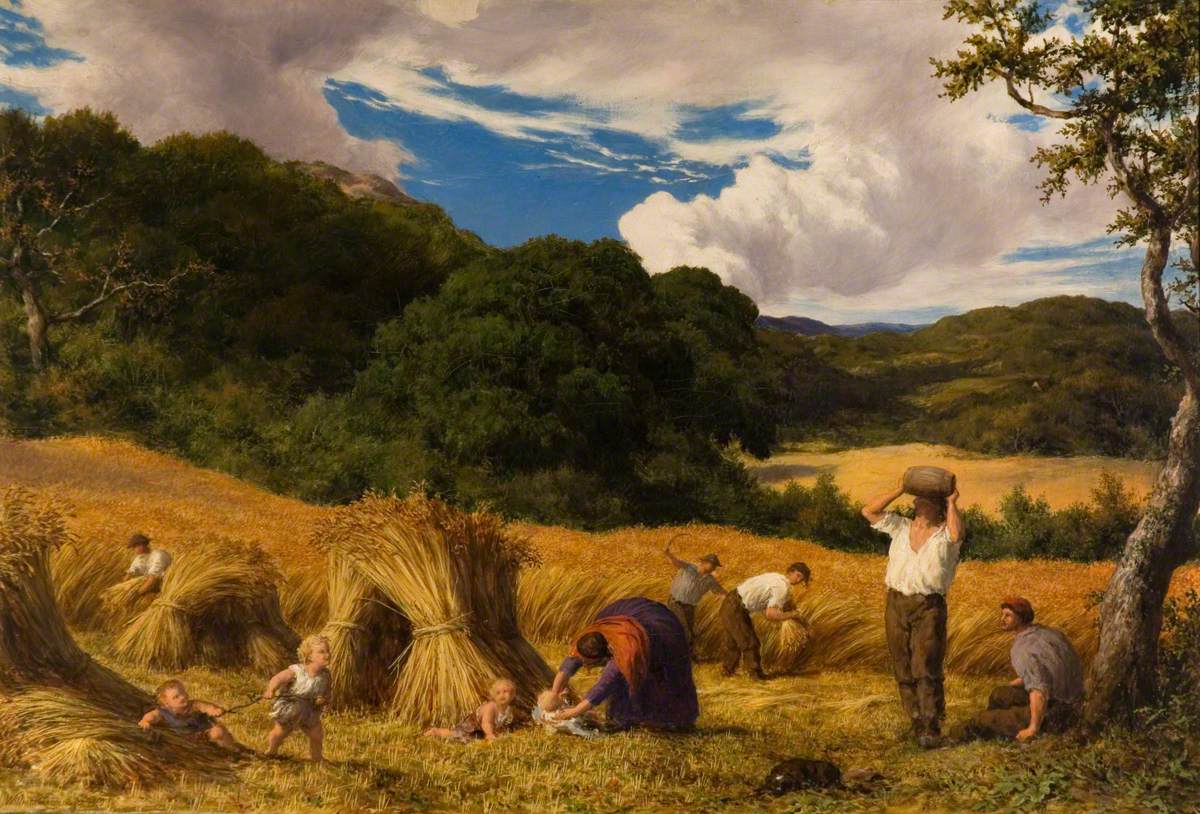Open-field Farming
Open-field farming describes an early stage in agricultural history, predating the widespread use of surveyed and precisely measured fields. Unlike the planned estates of southern Europe — established through villa systems — northern agriculture developed through homesteading, where land was worked by individual families and farmers. These holdings were divided into long, narrow strips suited to the ox-drawn plow, and their arrangement was typically irregular, shaped by local terrain, custom and community agreements.
Contents
This patchwork method of cultivation remains common in many parts of the world, especially in type-7 and type-6 hex regions, where scattered settlement and communal tradition continue to define the landscape. Open-field farming is characterised by its lack of strict boundaries, with strips of land belonging to different households interlaced across shared fields. These strips vary in length and width, often curving with the land or adjusting to avoid stones, bogs or other natural impediments. Each strip is cultivated individually, but plowing, sowing and harvesting may occur cooperatively, especially where communal oxen or tools are involved.
There is little permanent division between holdings — with few hedges, ditches or fences — relying instead on memory, custom and mutual recognition to mark ownership. This system reflects a deep interdependence between households, where land use is shaped not by law or survey, but by tradition, need and the rhythm of the seasons.
Irregularity
Boundaries between farms were typically defined by convenient natural features such as streams, rivers, tree lines, large stones or the edge of a rise in the land. These divisions were seldom recorded formally, relying instead on oral agreements passed from one generation to the next. With no formal surveying tools beyond a homesteader's judgment and practical experience, land was chosen for proximity to water, sun exposure and ease of tilling. This led to a scattered, irregular rural landscape, where patches of arable ground were often separated by stretches of untilled hinterland — scrub, bog, rock or woodland that had yet to be claimed or cleared.
Between these scattered holdings, the more fertile or accessible grazing areas were sometimes treated as common land, open to the use of any local family with herds. In time, the repeated use of these pastures by the same families gave rise to customary rights, established not by law but by tradition. These rights were respected locally and over generations, particular clans would be associated with particular fields, even without formal ownership. In early periods, there were no fees or restrictions on access; the land was simply used because it was there. Only much later did economic or political changes bring regulation or cost to such privileges.
Even in regions where land was originally organised through the Roman villa system, formal surveying practices gradually fell into disuse. As imperial control waned, villa estates fractured and were divided among inheritors, tenants or opportunistic settlers, giving rise to a patchwork of smaller, irregular fields. These plots rarely observed straight lines or consistent dimensions. In most cases, crop rotation was not practiced. Once a field's fertility was exhausted, the farmer would shift to a nearby area, clearing and plowing anew. This shifting pattern of cultivation contributed further to the landscape's disarray, leaving behind scattered meadows, fallow patches and overgrown clearings — land that had once been tilled, then abandoned as the soil declined or needs changed.
Evolution into Estates
The lack of cohesion between scattered plots, combined with the frequent disputes over borders and usage rights, led to rising tensions as populations grew and pressure on available land increased. Conflicts over grazing, inheritance and trespass became common, escalating in some regions to open hostility or blood feuds between families and neighbouring clans. In response, and in part as a means of imposing order on increasingly unruly settlements, many of these fragmented holdings were absorbed into expanding feudal estates. As demand for food intensified, the need for more efficient and controlled land management became urgent. Land, already viewed as the foundation of wealth and authority, was granted in large tracts by kings and high nobles to loyal vassals, who were tasked with bringing the territory under their control.
These vassals undertook the process of consolidating strips and scattered plots into unified, manageable parcels. Fields were physically enclosed — hedged by rows of shrubs or trees, reinforced with fences and marked by ditches or walls. The act of enclosure served not only to manage agriculture more effectively, but also to assert dominance over the land and its people. Local inhabitants, who may have worked their family's strips for generations, were bound to these reorganised estates as serfs. Legal ownership of the land was granted to the vassals and the people upon it were considered part of the grant, tied to the estate in perpetuity and stripped of their former autonomy.
However, in regions where the density of homesteaded farmland remained low — due to poor soil, difficult terrain or sparse population — the open-field system endured. These areas were often too remote or too economically marginal to justify the cost of consolidation. Although still embedded within the feudal hierarchy, the people in such places continued to operate under older customs, cultivating irregular strips and relying on informal, communal arrangements. Nonetheless, they remained subject to the local lord's authority, obligated to pay taxes, render labour and abide by the legal frameworks of serfdom, even if the structure of their fields remained unchanged.
See Bread (symbol)
